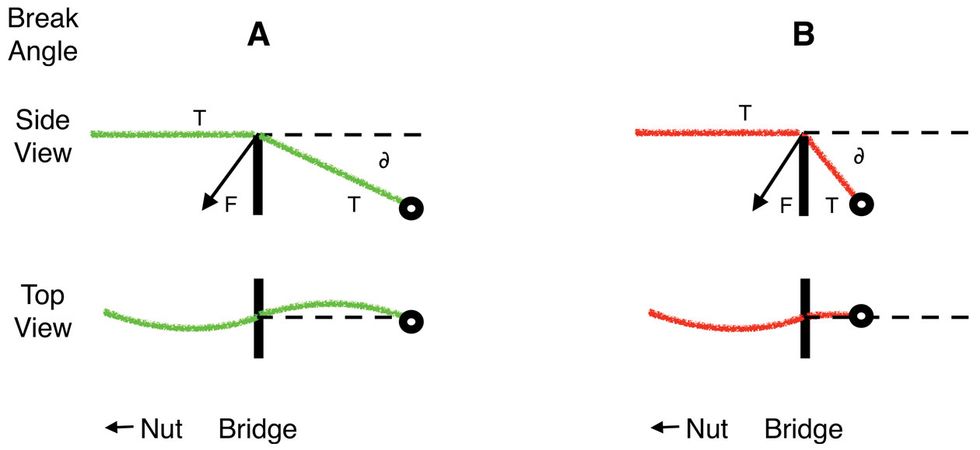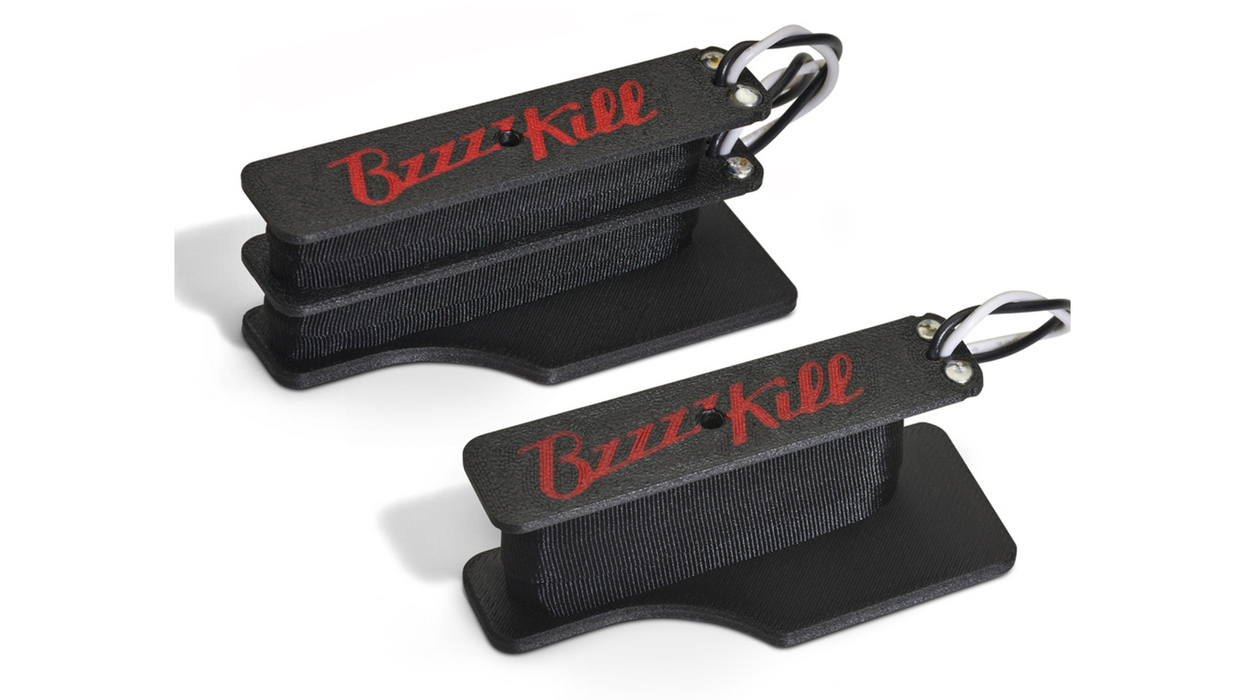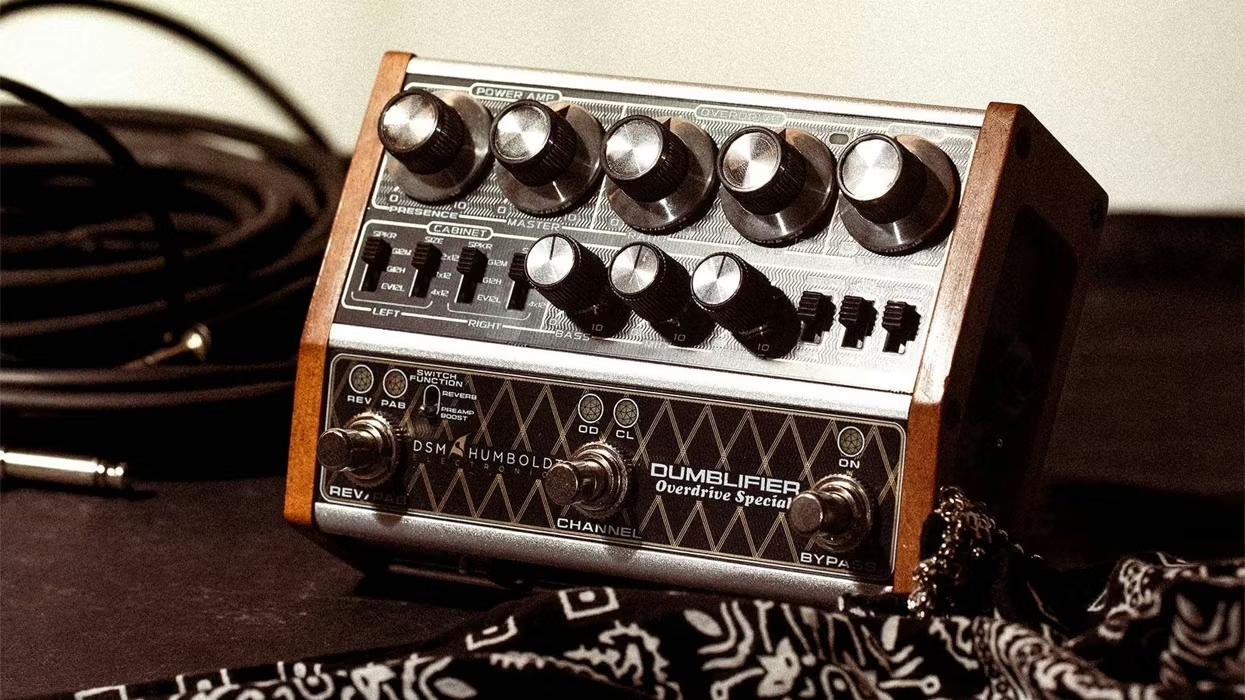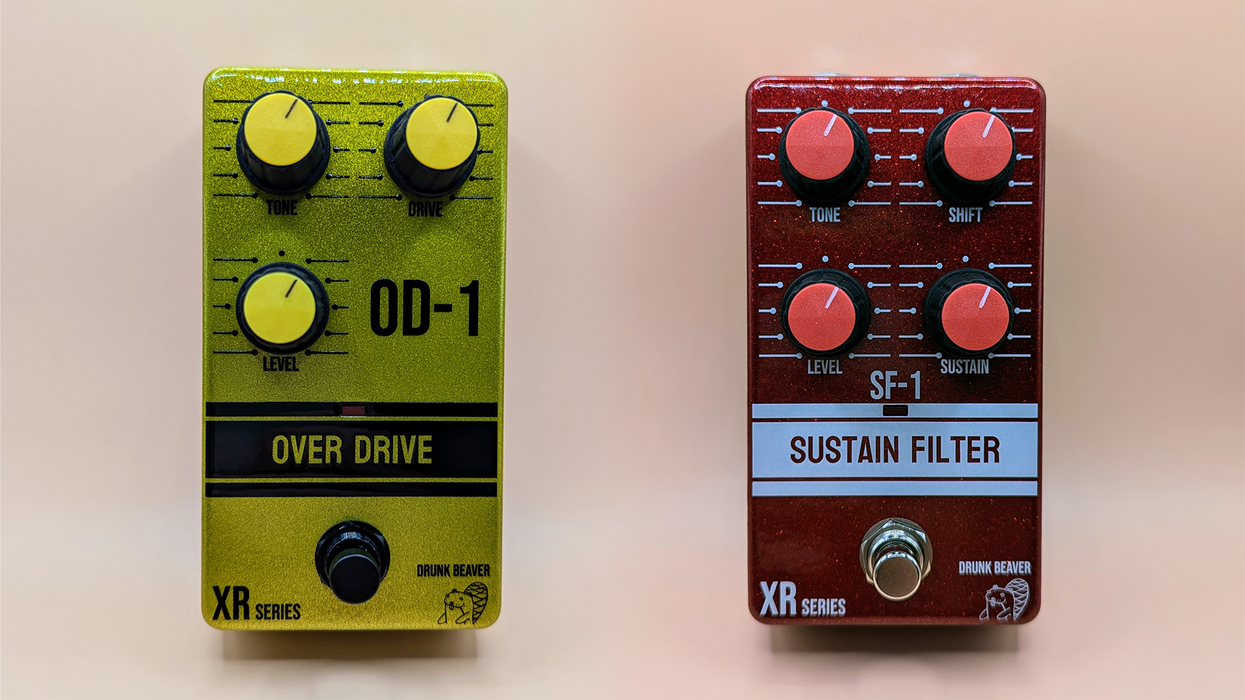It surprises me how some details of our instruments are discussed obsessively, while others remain unattended. One such example is the intense discussion about nut material, which we touched on in October 2020's “Does Fret Material Really Matter for a Bass?" It's an interesting discussion, because a nut's DNA is close to obsolete once we fret a note, yet frets only remain a topic when it comes to dimensions and playability.
Another good example is the question of whether a tilted or straight headstock is the way to go, and what their different break angles mean for tone and playability. Guess what? It's another topic that's as good as irrelevant once we start using our fretboard! So, it should be no surprise when a bassist is baffled at how the feel and tone of his bass has changed after shimming the neck.
Shimming is about changing the neck's tilt by adding a thin piece of plastic or wood into the neck pocket. When it comes to bolt-on necks, it's a popular way to help with a bridge that has run out of its range of adjustment. Simply tilt/maneuver the neck backwards, and you then raise the bridge to get back to proper action, or vice versa.
Like the bassist who inspired this column, after doing his own shim, you might be wondering about the likeliness that a neck-pocket shim could be the source of altered feel and tone. Well, a tight and evenly routed neck pocket has long been seen as an important proof of quality, with some builders even removing potentially disturbing lacquer from the pocket area. With that in mind, yes, throwing in small strips of a credit card rather than a wedge-shaped piece of wood seems like a sacrilege. However, it's not like creating small gaps in a neck pocket qualifies as acoustic chambering. Shimming might reduce the neck's actual total-contact area, but the overall pressure is force per area, so it remains unlikely that any such small change would be heard or even felt.
Of course, our player did readjust his bridge after shimming, without thinking this could be the cause of the changes. Some of his colleagues even suggested that it felt and sounded different because the steeper the break angle, the higher the strings' tension.
Following is the formula for determining string tension (T) for a given frequency or pitch (F):
T = [UW x (2 x L x F)2] ÷ 386.4
Here, “UW" represents the specific weight per length unit of core and winding, while “L" is our scale length. Don't worry: There's no need to dig any deeper into this formula right now, except to simply absorb the terms involved. It is important to note that there is no mention of string length beyond the bridge or nut, and nothing about break angle or downward pressure. In mathematics and physics, this simply just means they are irrelevant.
Some musicians use the term “perceived tension" to describe their feeling of plucking a string, which comes a bit closer to our friend's concerns about his bass, but it absolutely collides with all things physics. Said perception is simply a matter of the elasticity to the string's elongation when plucked and moved out of its neutral position.
In a string, the core has to handle all the tension. Therefore, it has a significant and non-negligible stiffness that reacts to lateral movements of the string, which does highly depend on said break angle. The higher or steeper the angle, the higher the downward pressure.
Let's look at the two scenarios in Fig.1. Bass A has a break angle that's closer to zero—as in the case of a Fender-style 1-piece bridge—with just enough downward pressure so the string doesn't pop out when plucked. Meanwhile, bass B has a break angle closer to 90 degrees, representative of almost any string-through bass.
Plucking a string on bass A—with its slippery bridge contact—means it will be immediately lengthened from the anchor point of the tuner and tailpiece or bridge. With the higher downward pressure on bass B, there is far less slippage, which makes it more difficult for the part outside the scale length to stretch. It's less elastic and feels, well, harder.
It's not only about slippage, however. It's also about a different bending of the core. On bass A, the core stays relatively straight on both sides of the bridge, meaning that any core bending on the playing side causes a bending (and finally vibration) after the bridge, partially compensating for the core's stiffness. This doesn't apply to bass B since its core behind the bridge is perpendicular to the strings' movement, and is therefore unable to compensate. Since all bending of the active string happens on a shorter length, it results in a higher resetting force, which needs more power from your hand to get the same deviation of the string.
Whether you prefer the hard or soft feel—or something in-between—is simply a personal choice. And, as opposed to the nut's break angle, it has consequences for every note played.








![Rig Rundown: AFI [2025]](https://www.premierguitar.com/media-library/youtube.jpg?id=62064741&width=1245&height=700&quality=70&coordinates=0%2C0%2C0%2C0)












 Shop Scott's Rig
Shop Scott's Rig















































